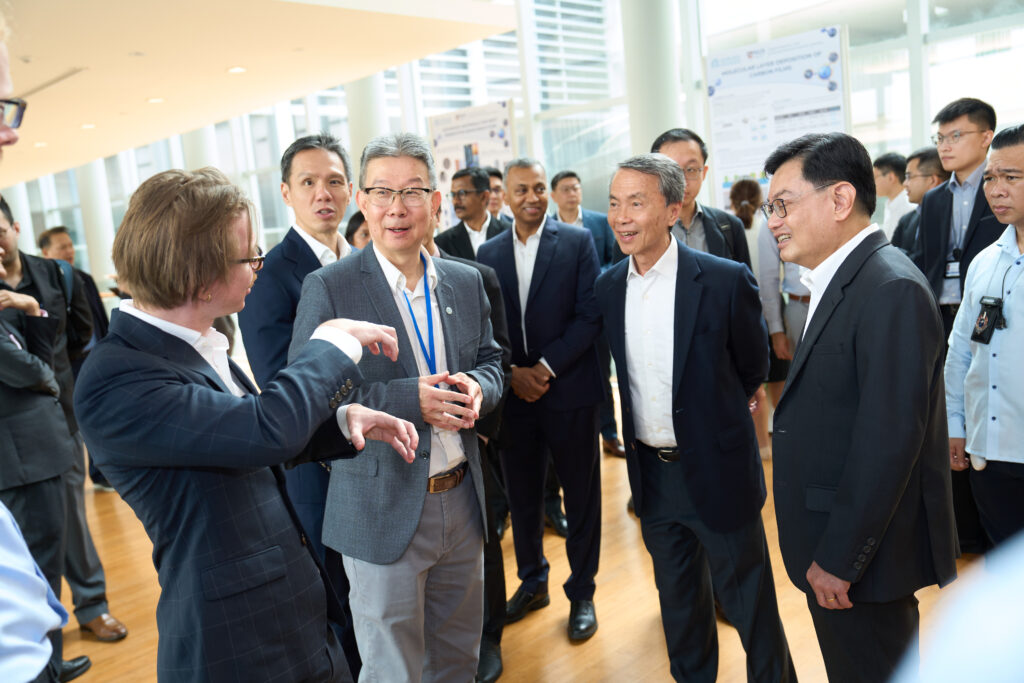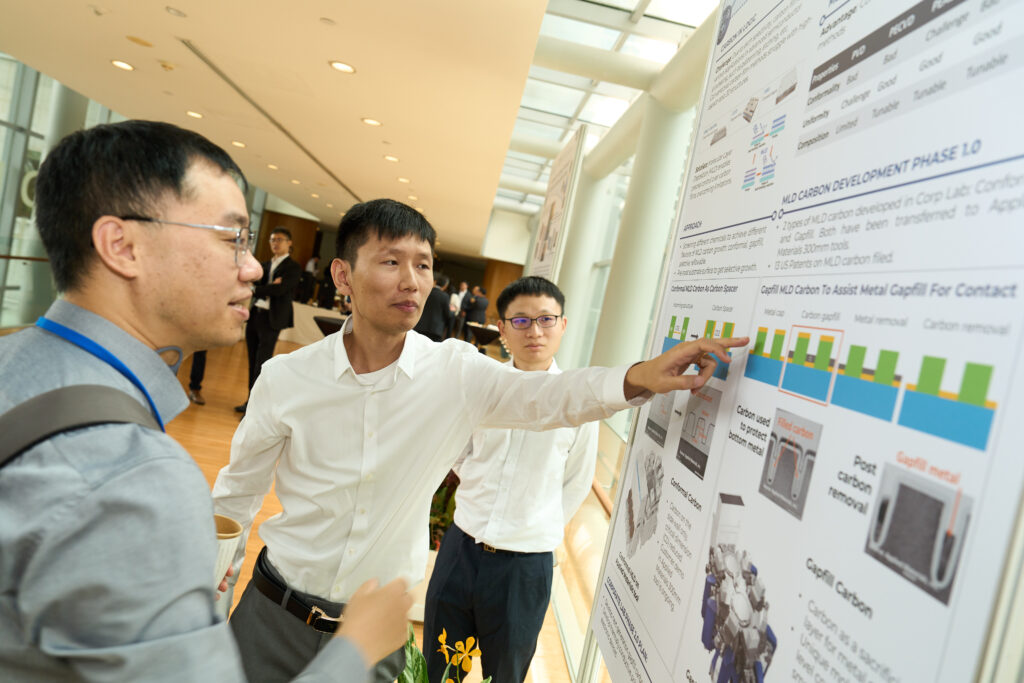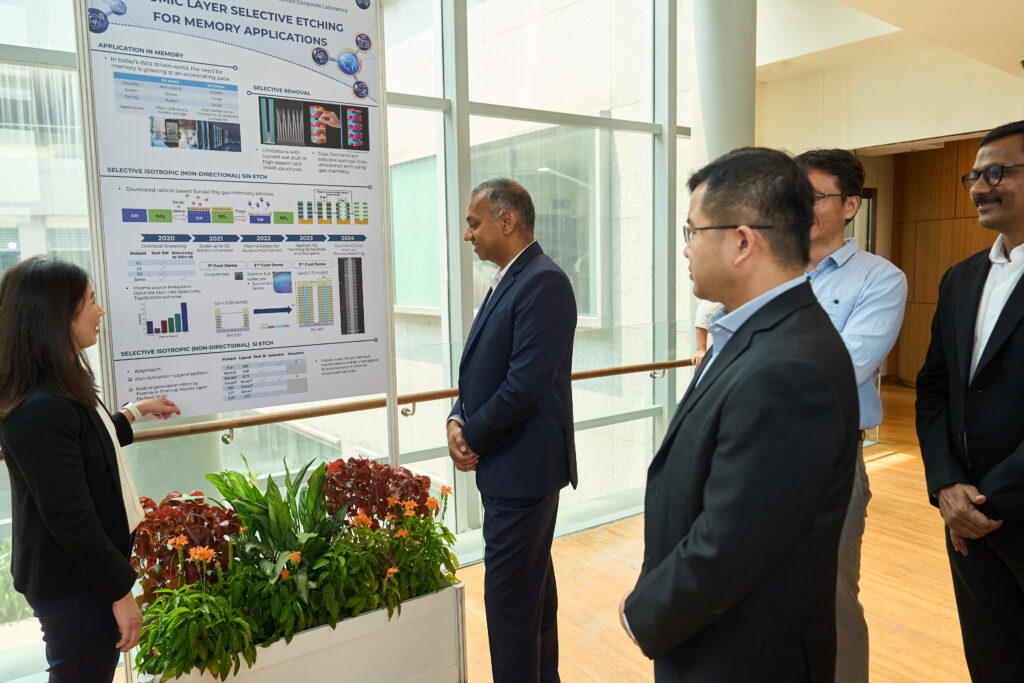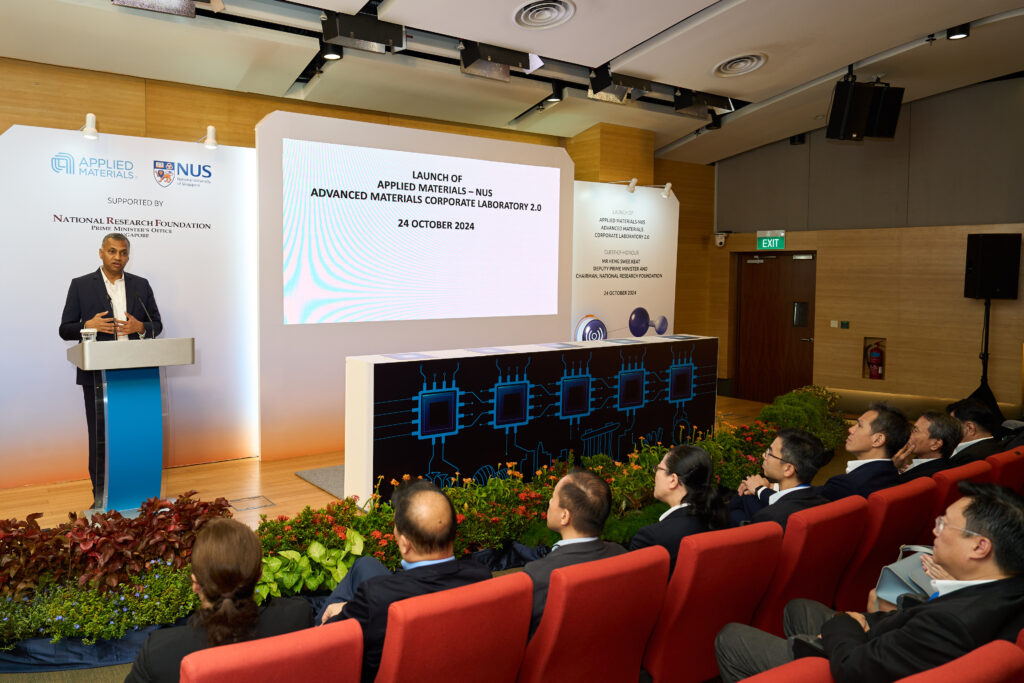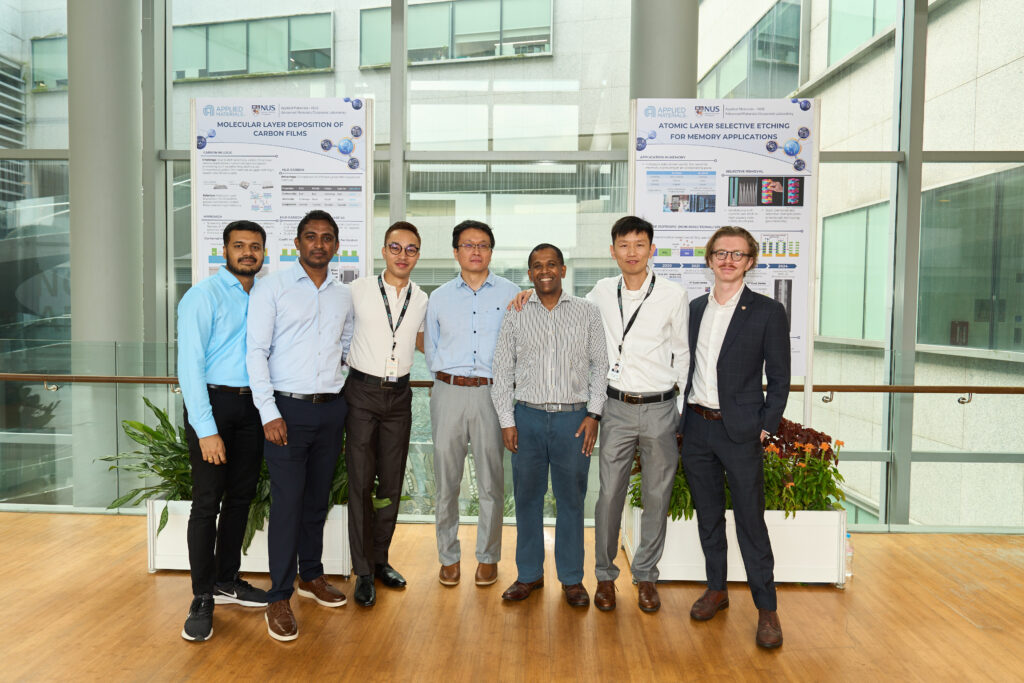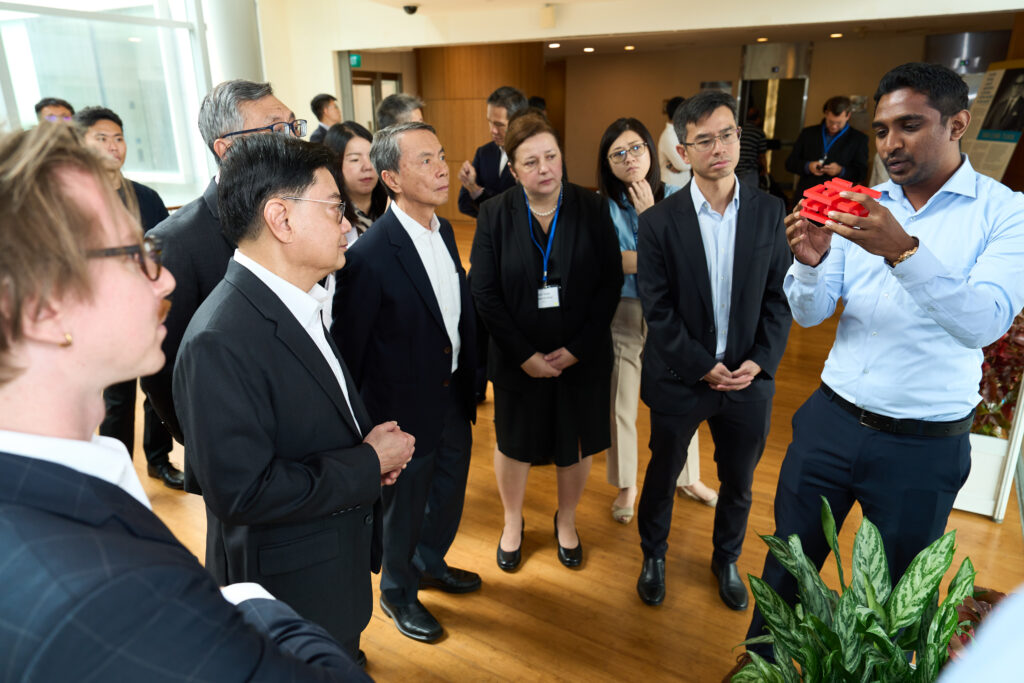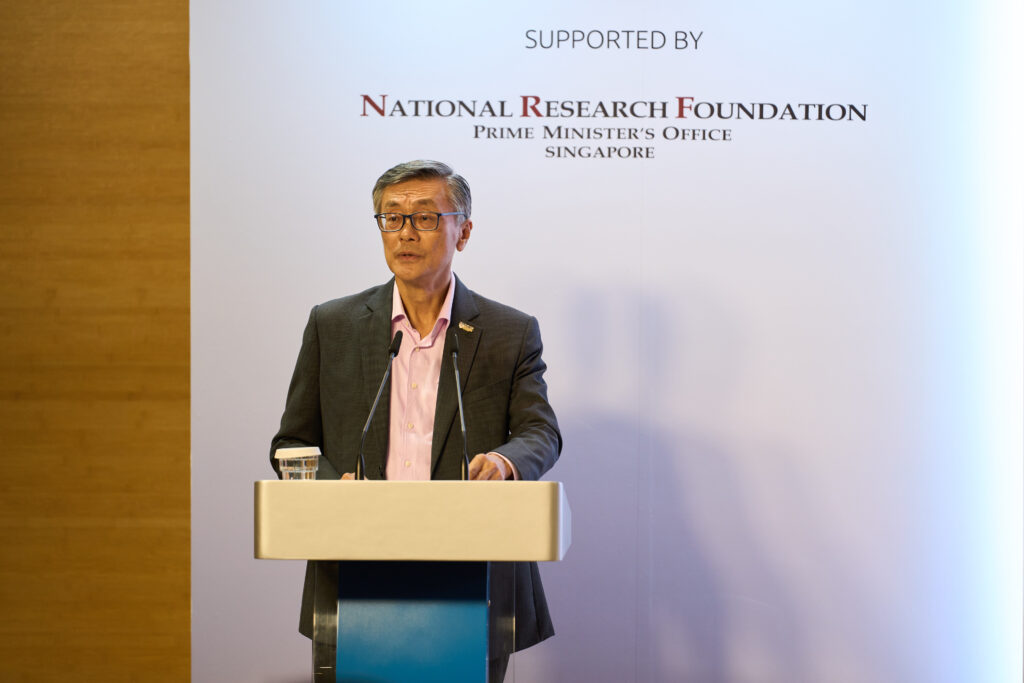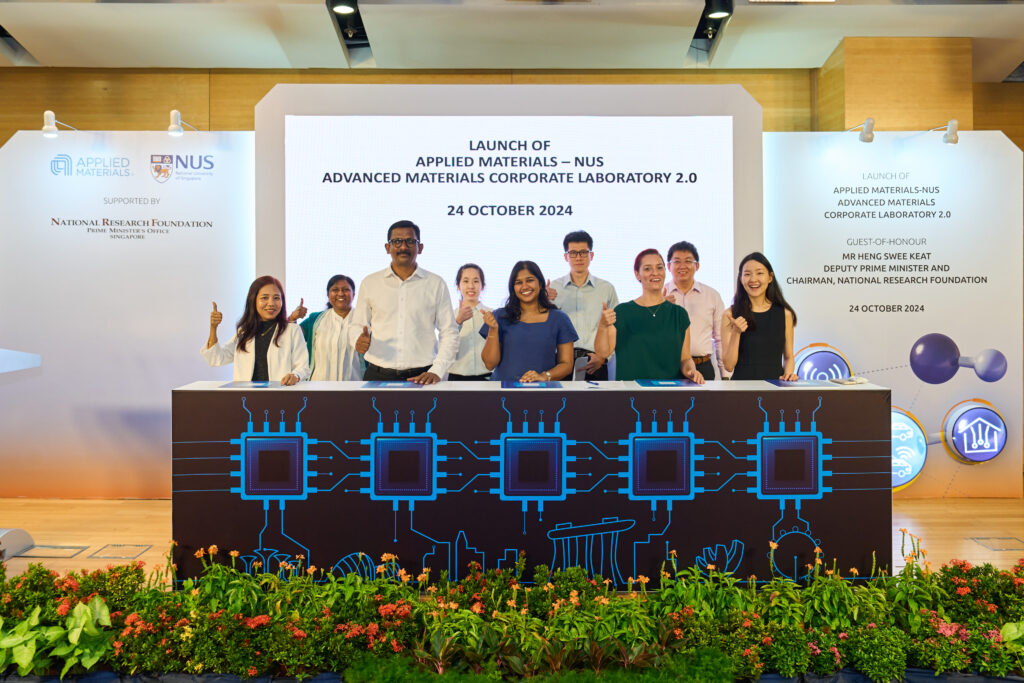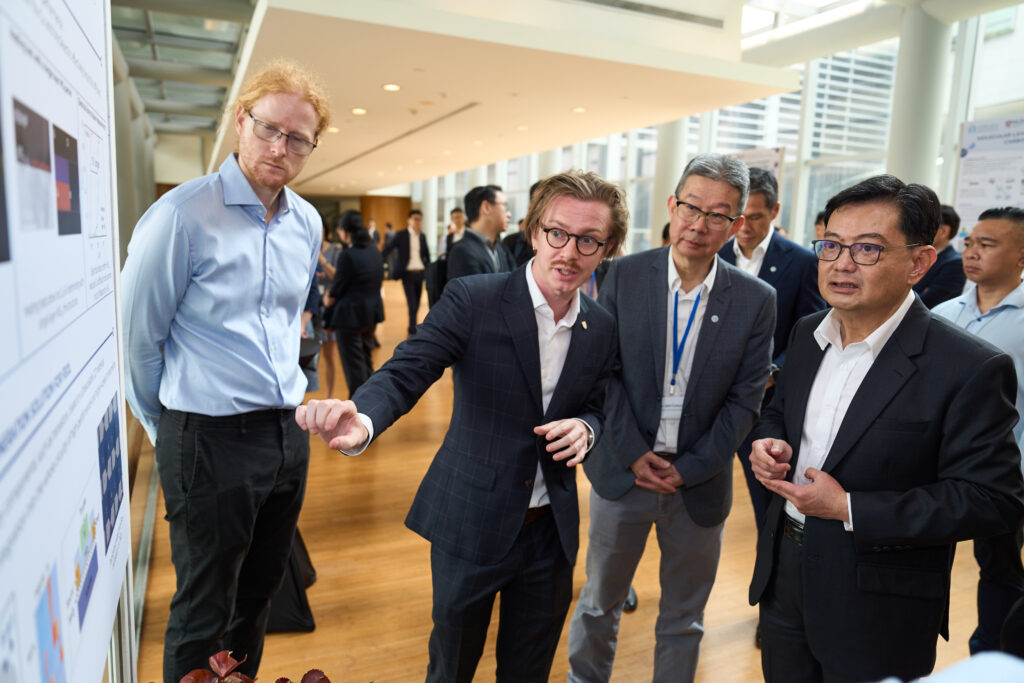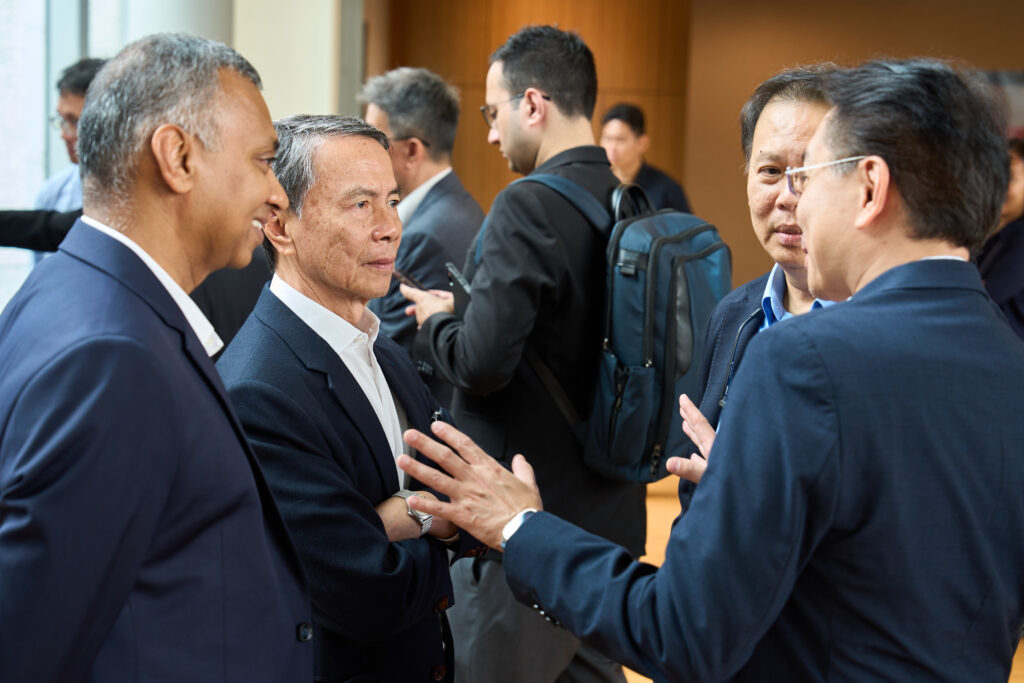
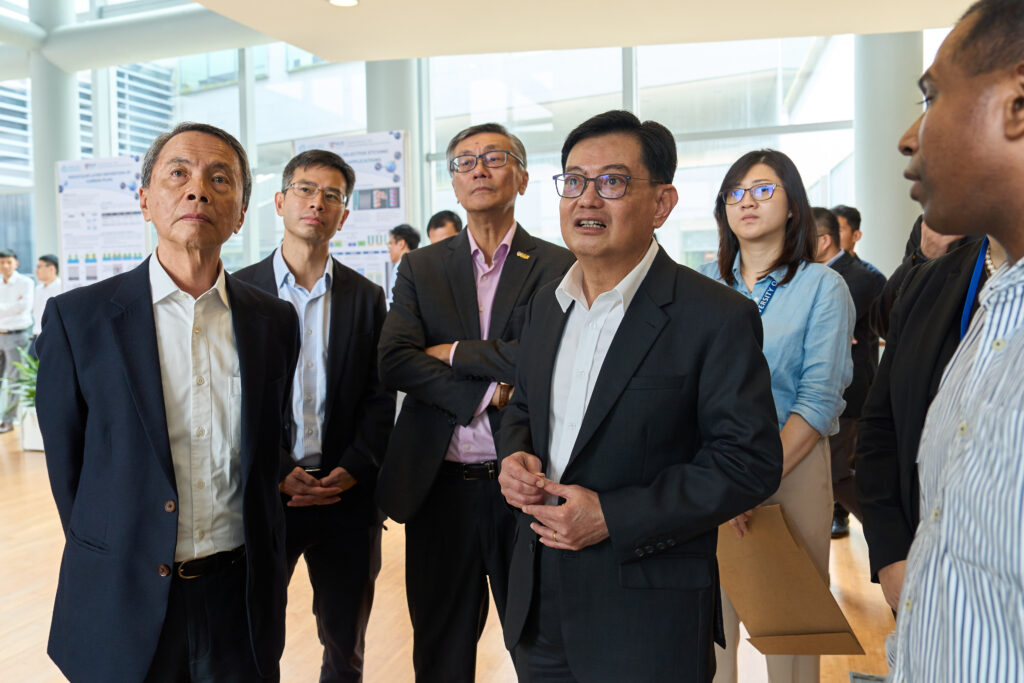
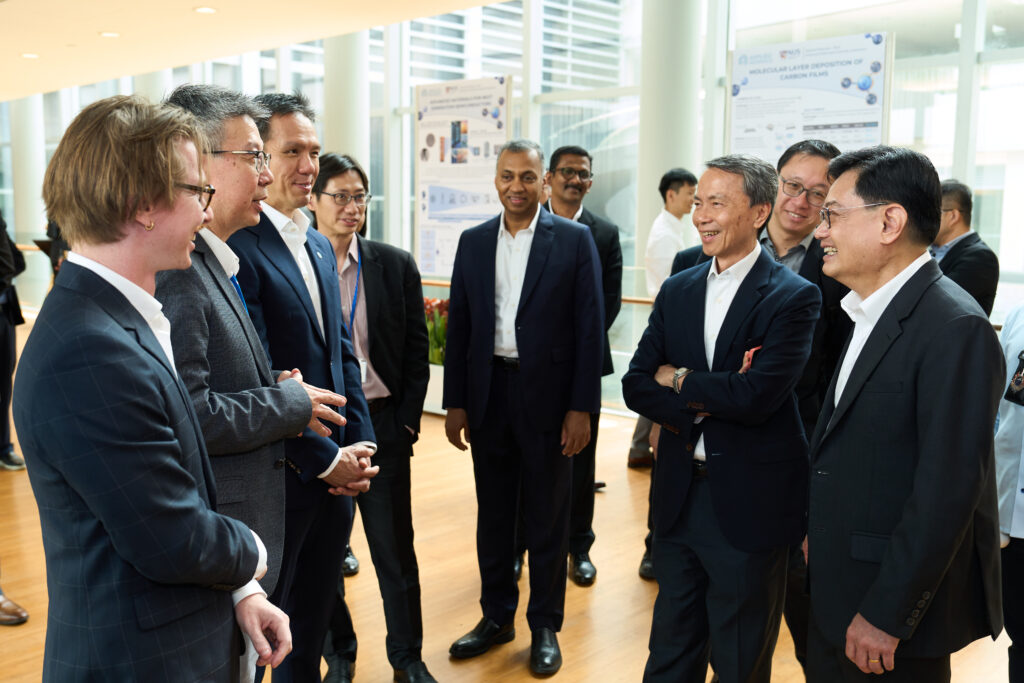
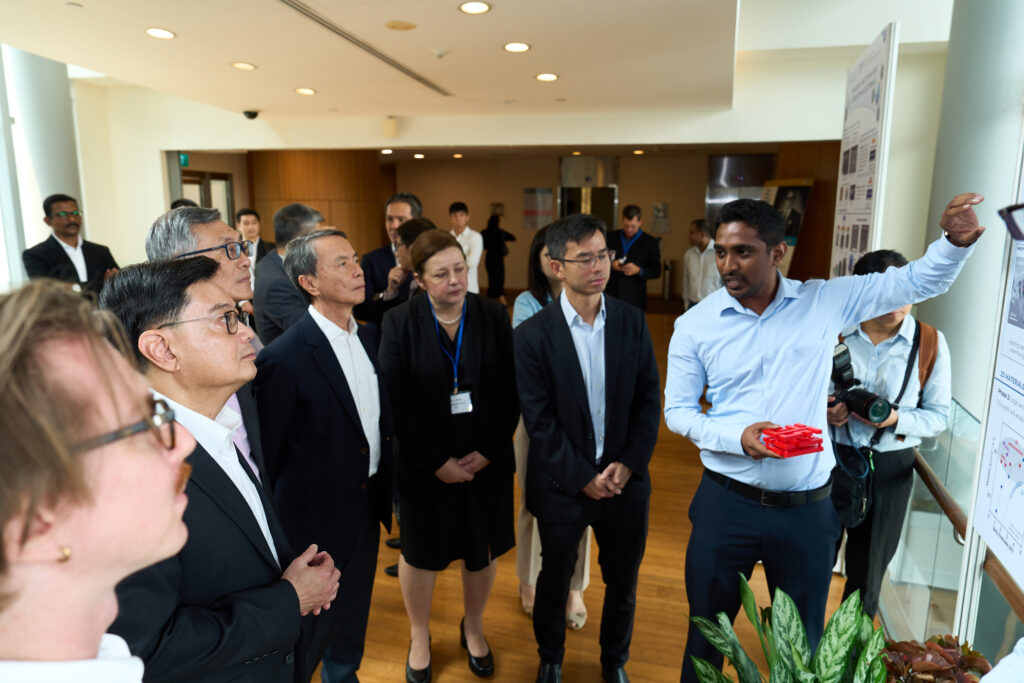
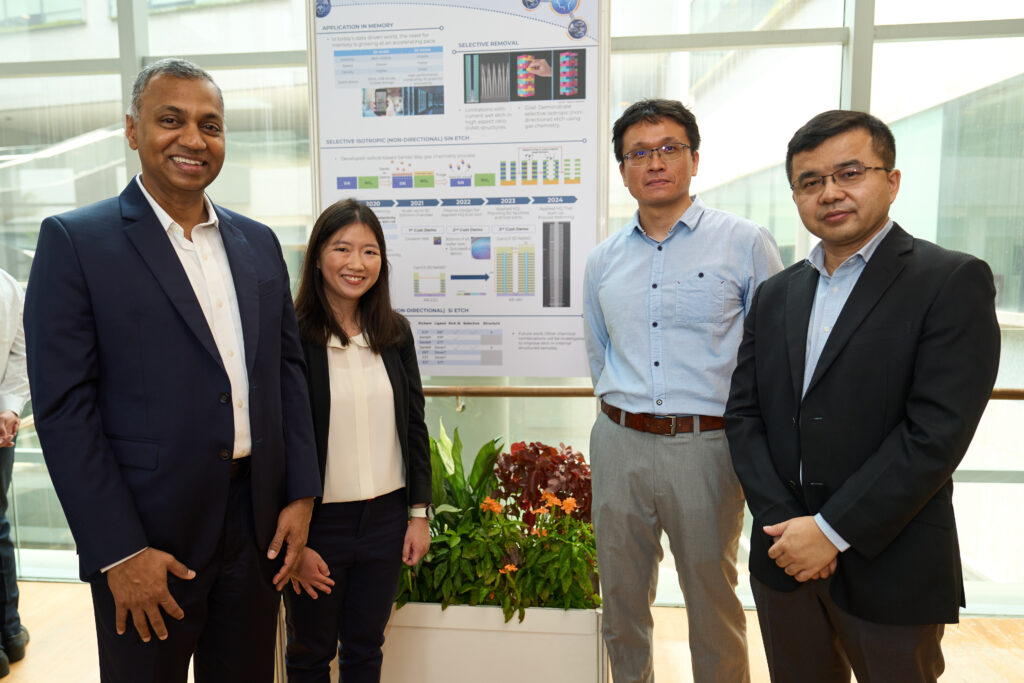
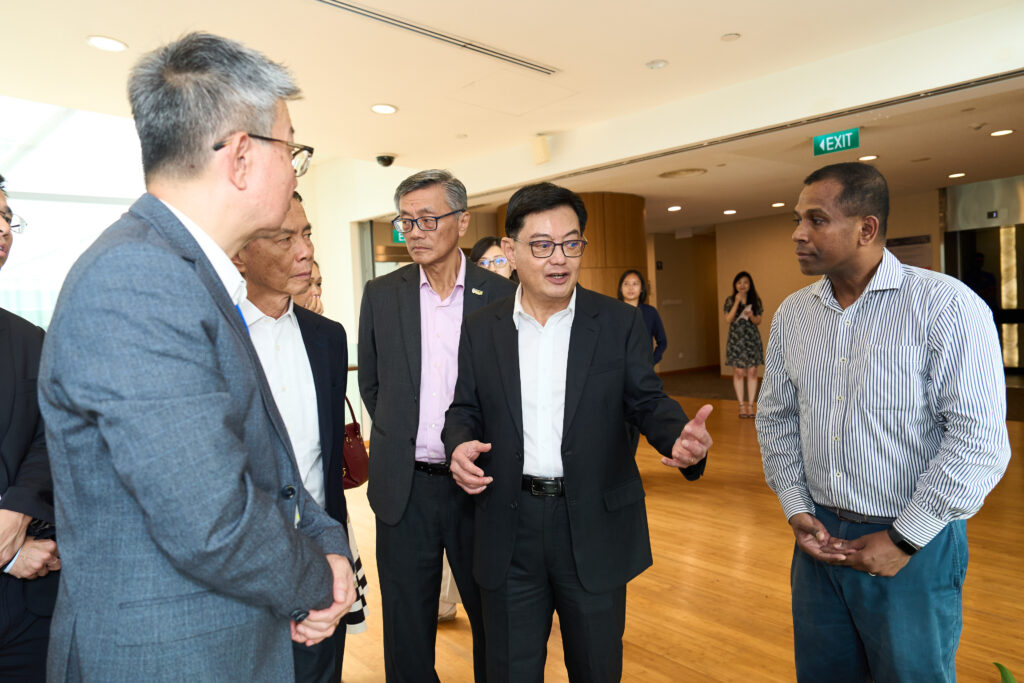
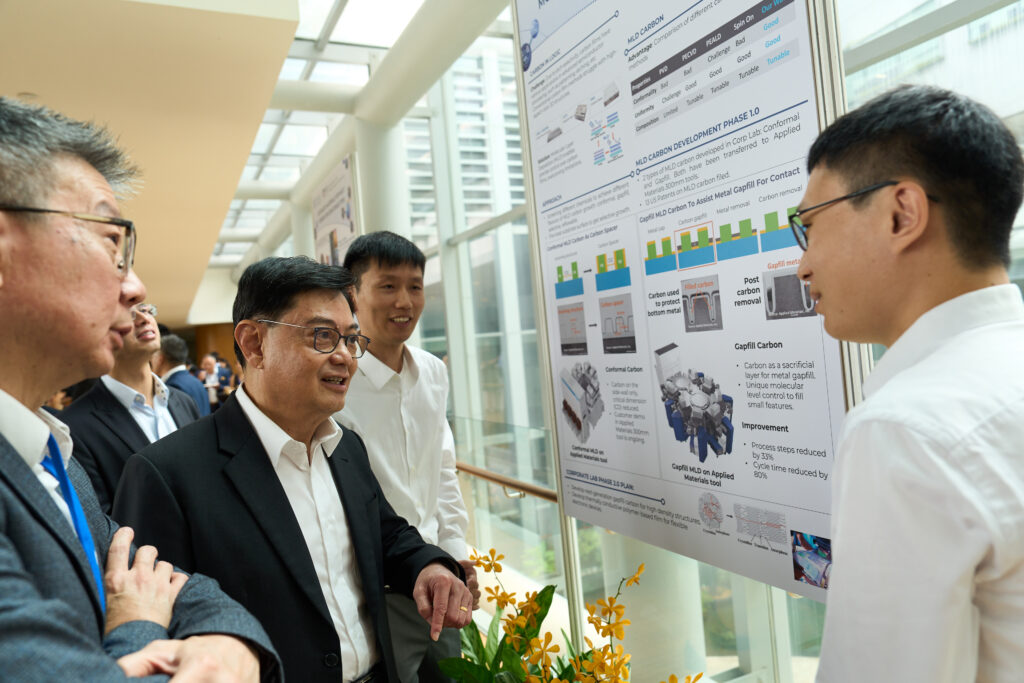
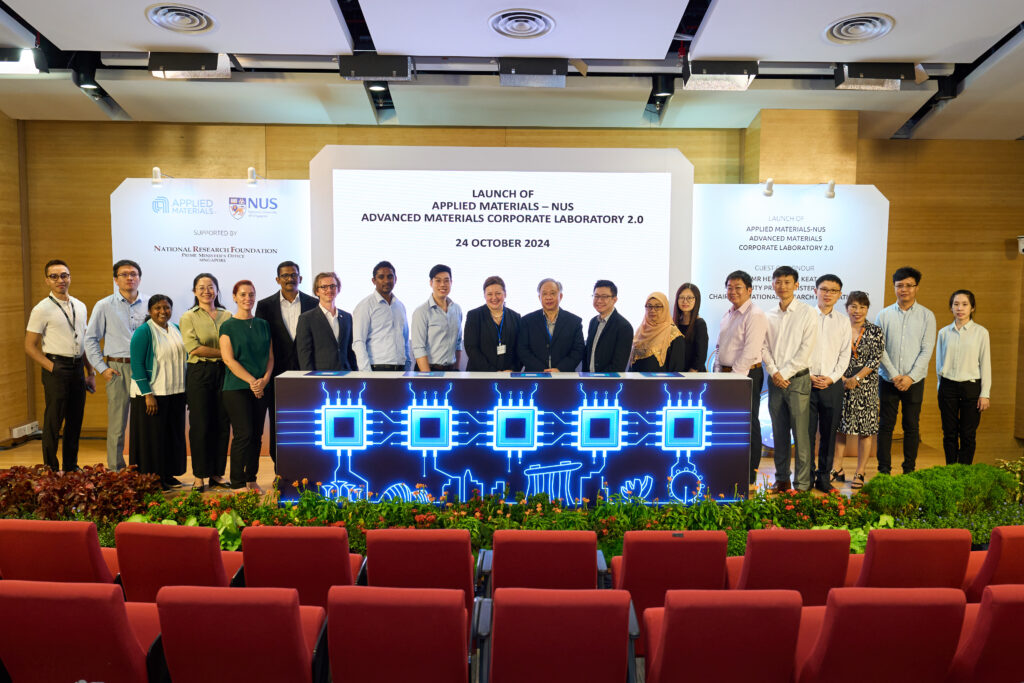
24 October 2024


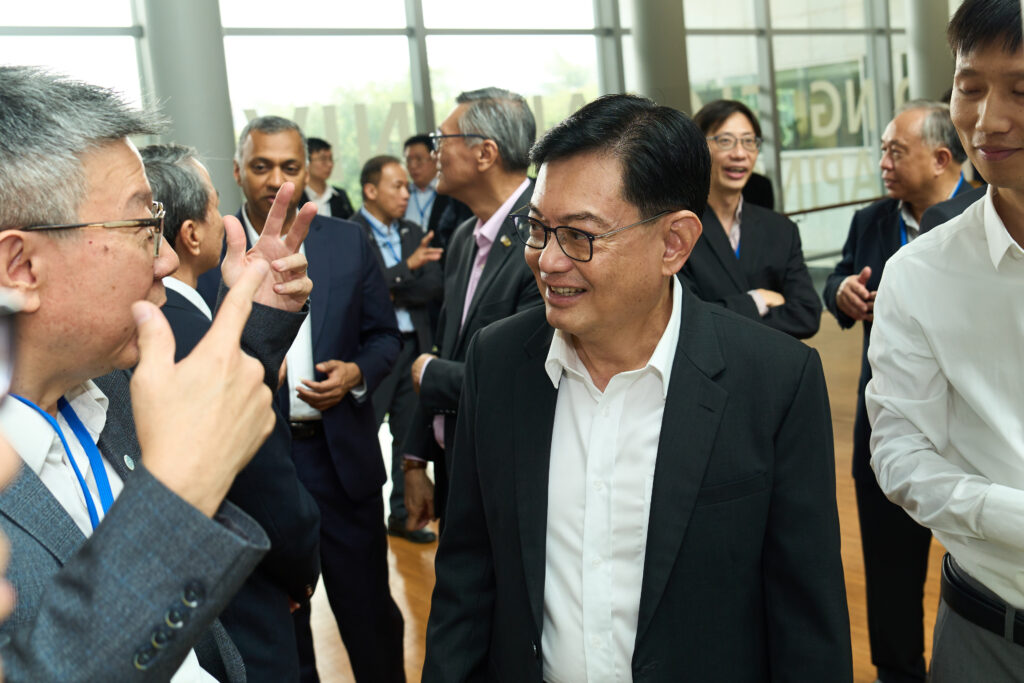
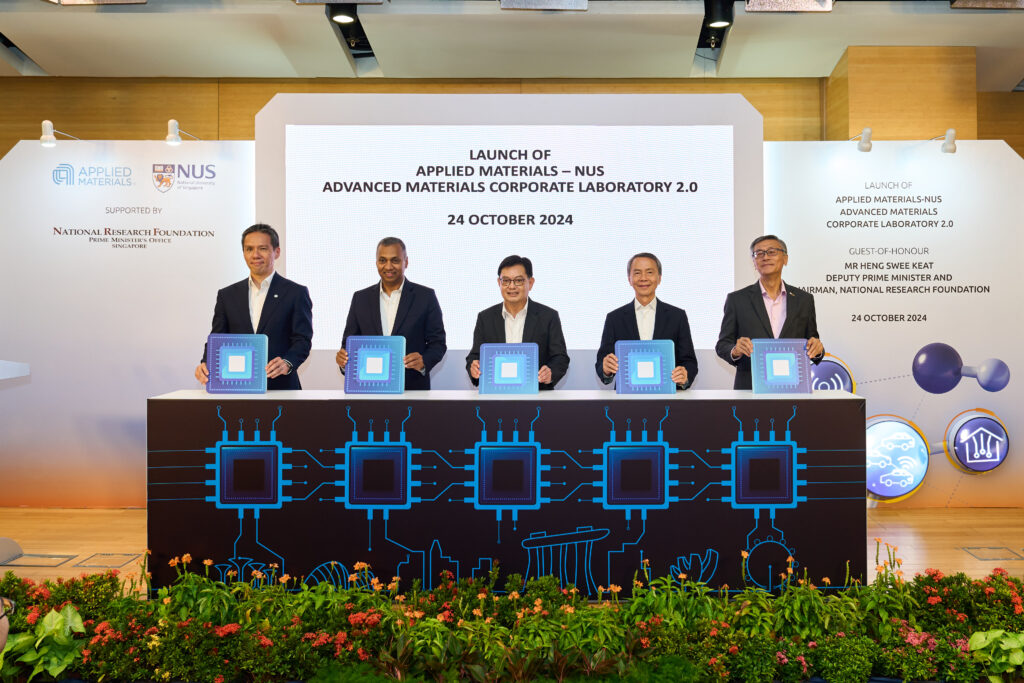
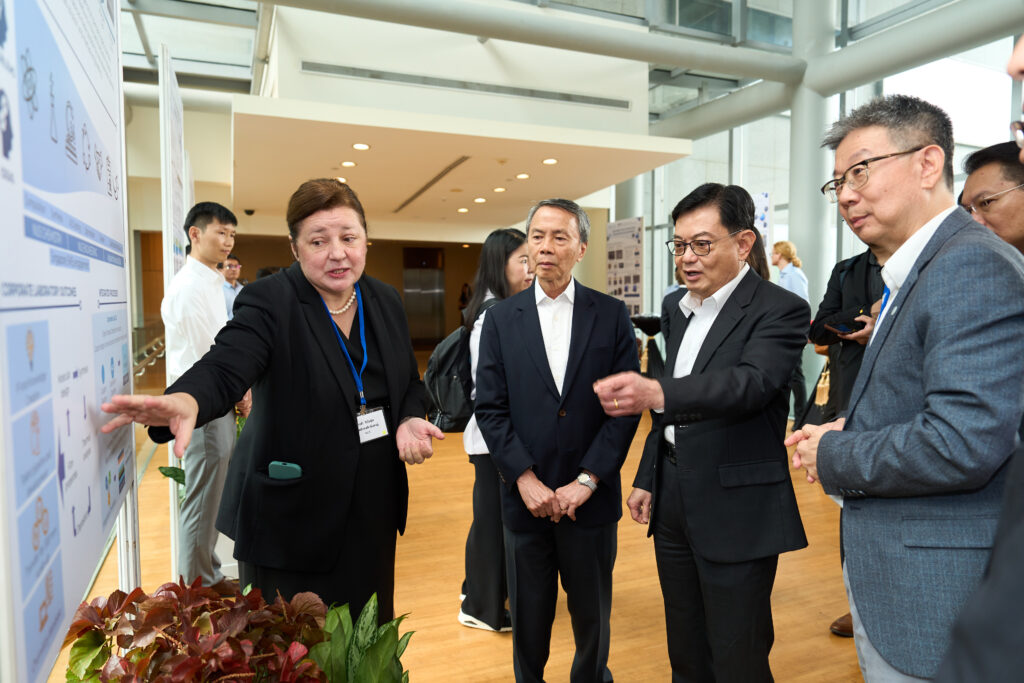
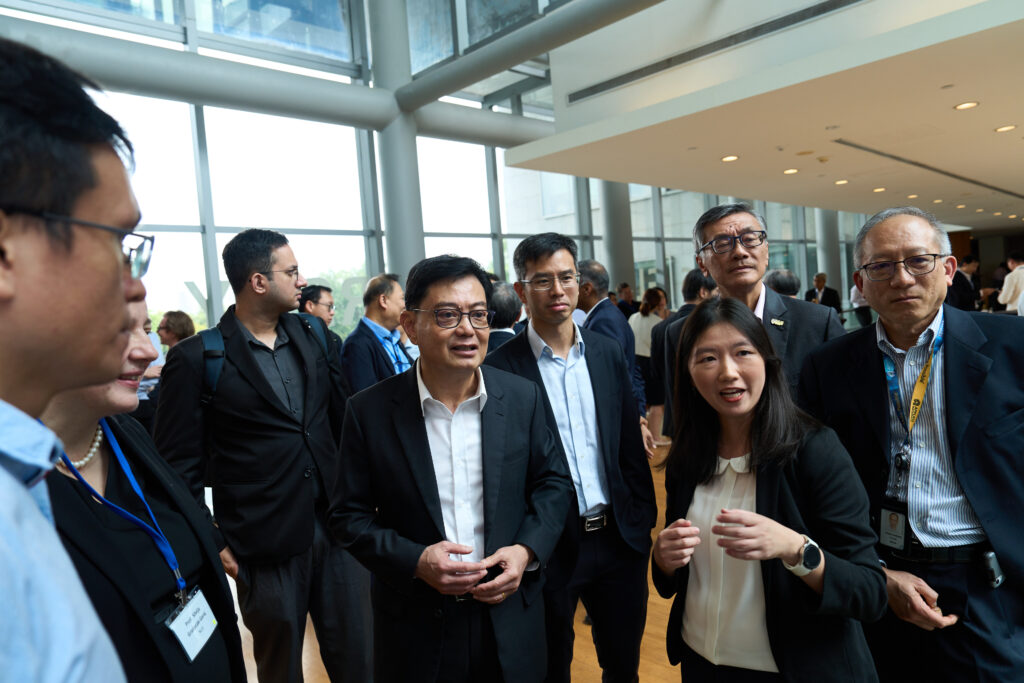
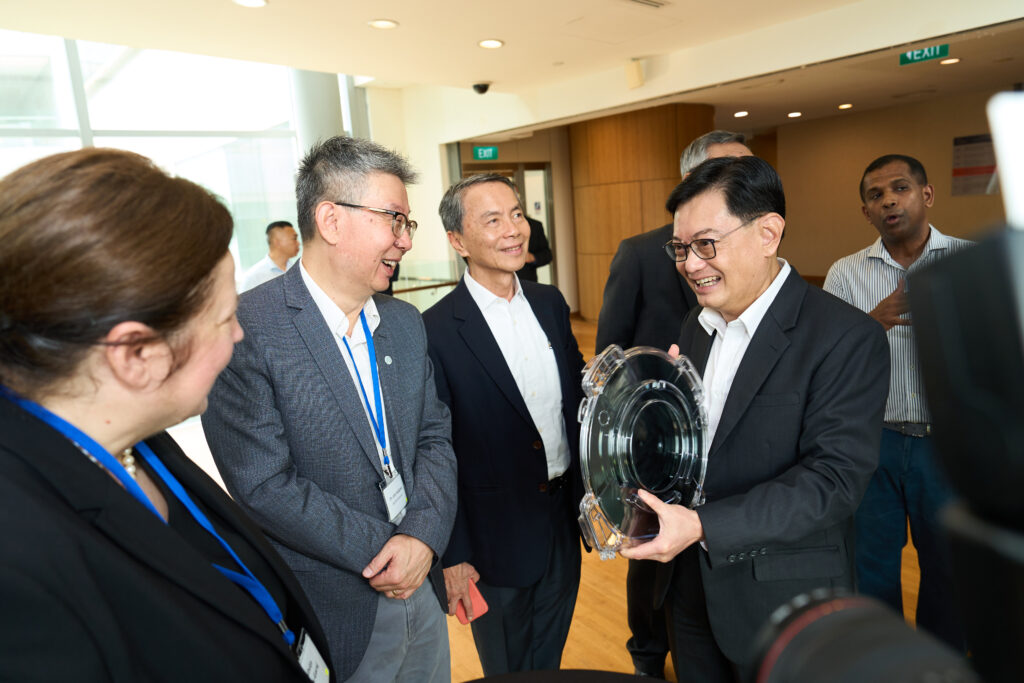
At Applied Materials-NUS Advanced Materials Corporate Lab, the second phase of the Corporate Lab will elevate the well-established microelectronics research capabilities at NUS to new heights by fostering innovation, accelerating the development of cutting-edge technologies and expanding interdisciplinary collaboration.
It will include a new cleanroom in NUS with state-of-the-art materials synthesis and characterisation capabilities. Utilising these enhanced capabilities, Applied Materials and NUS will focus on developing industry-scale solutions to complex semiconductor manufacturing challenges, with an emphasis on integrated processes and interface engineering.
Along with the new phase of the Corporate Lab, the Applied Materials Professorship has been established at NUS to attract experts in semiconductors, materials science and other technology fields. In addition, the enhanced capabilities at the Corporate Lab will introduce new educational and talent development opportunities for undergraduates, postgraduates and professionals in the areas of microelectronics, advanced materials and process engineering. This will ensure the University’s sustained academic leadership within these critical fields and contribute to Singapore’s overall economic growth and development.
Phase 2 includes:
Find out more by clicking on each question above










The latest phase of its collaboration with NUS is part of the company’s “Singapore 2030” plan to strengthen its manufacturing capacity, R&D capabilities, technology ecosystem partnerships and workforce development in Singapore.
Hosted at the College of Design and Engineering and the Faculty of Science at NUS, the Applied Materials-NUS Advanced Materials Corporate Lab offers world-class, multi-disciplinary R&D capabilities that span applied chemistry, materials science and microelectronics process engineering. The goal of the Corporate Lab is to accelerate discovery of new materials that can be quickly transferred into commercial applications for manufacturing future generations of semiconductors.
Find out more by clicking on each question above
